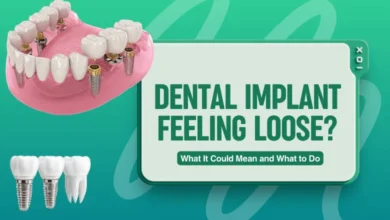12 Facts You Should Know About Alcohol Abuse
Alcohol is by far the most socially accepted drug in our society. Not only is it legal for those over the age of 21, but it’s also widely available and easily accessible in stores and bars all over the country. It’s no surprise, then, to learn that 85.6 percent of US adults have drunk alcohol, or even that the average American drinks around 2.3 gallons of alcohol a year.
This prevalence and normalization of drinking make alcohol abuse one of the most misunderstood forms of addiction. Substance abuse facts show us how alcoholism has a drastic physical and psychological effect on the individual with a drinking problem. It also has a lasting impact on their family, creating a destructive legacy that then spreads out into the wider community.
As such, it’s important to understand this form of drug abuse and recognize the damage alcohol can do. Keep reading to learn the facts.
1. Almost All Heavy Drinkers Experience Liver Damage
The liver is the body’s filter, responsible for breaking down fat, glucose, hormones, and toxins such as alcohol. Consuming high quantities of alcohol over a prolonged period forces the liver to work harder at removing alcoholic toxins from the body.
Excessive alcohol consumption contributes to three types of liver disease. The most common is fatty liver, a condition which almost all heavy drinkers develop, while many others also develop alcoholic hepatitis, where the liver cells become inflamed.
And, up to 20 percent of people with a drinking problem develop cirrhosis, scarring of the liver. While abstinence can help reverse this damage, once the cirrhosis is severe enough, the patient would need a liver transplant to survive.
2. Alcohol Weakens Your Immune System
While the liver often bears the brunt of alcohol abuse, alcohol has a range of diverse effects throughout the body, including on all cells of the immune system. Search “does drinking alcohol lower your immune system” and you’ll see how heavy drinkers have an increased risk of serious infections.
Alcohol abuse disrupts your body’s immune response through a combination of organ damage, altered gut functioning, reduced immunity, and a weakened recovery response. This then makes heavy drinkers more susceptible to a range of health problems, including infections and inflammation.
In severe cases, even contracting the common cold or the flu could lead to complications such as pneumonia, respiratory infections, and tuberculosis for those with a drinking problem.
3. Alcohol Abuse Costs Us All
While alcohol abuse takes its toll on the country’s economy through disease and loss of life, the cost to society doesn’t end there. According to a CDC report, heavy drinking costs the government and US taxpayers an estimated $249 billion every year. This works out as around $807 per citizen.
This economic burden covers the cost of lost workplace productivity, direct and indirect medical costs, criminal justice expenses, and losses from motor vehicle collisions related to excessive alcohol use.
4. Alcohol Damages the Brain
While we all know that excessive alcohol use is bad for our health, conflicting information about the benefits of drinking certain alcoholic beverages in moderation can cause confusion.
There’s a lot of good evidence to suggest that a small glass of red wine with dinner can reduce inflammation, increase good cholesterol levels, boost mood and boost heart health. But, any amount of alcohol is damaging to the brain.
It makes sense since even small amounts of alcohol slow down our thinking and cause confusion. But continuous alcohol consumption can also lead to permanent changes in brain chemistry. Those who drink more than 14 drinks per week show an average 1.6 percent reduction in brain volume ratio. Similarly, having a drinking problem can increase your risk of developing dementia and may even lead to brain damage.
5. Quitting Cold Turkey Can Kill You
If you do have a drinking problem, it’s vital to go to rehab and seek help from professionals, especially if you have been drinking to excess for more than two years.
This is because, while continuing to drink can harm your health, so can quitting cold turkey. Suddenly cutting off your alcohol supply can send your body into shock, resulting in drastic withdrawal symptoms and serious complications such as seizures and even death.
Instead of going through the detox process alone, make sure to seek medication addiction treatment where professionals can ensure that your recovery is slow, safe, and effective.
6. More Than 21 Million Americans Seek Help for Alcohol Abuse Every Year
Luckily, more and more people with alcohol and drug abuse issues are choosing to seek help from professionals and rehab centers. A 2019 NSDUH report showed that 5.9 million people aged under 25 needed alcoholism treatment in the past year, while 15.6 million adults aged 26 or older needed treatment.
7. Alcohol is One of the Leading Causes of Preventable Deaths
Most sources recognize that deaths related to drinking rank alcohol as the third leading cause of preventable death in the US, placed after smoking tobacco and medical errors. These deaths include lethal accidents related to drinking and overdoses related to alcoholism.
But, this estimate may still be conservative since sources only consider direct alcohol-related deaths. Unlike medical errors and smoking, alcohol can also contribute to preventable death statistics in an indirect way, such as those who commit domestic violence while intoxicated.
8. Alcohol Abuse Affects the Skin
Alcohol and drug abuse don’t just harm your insides, using these substances can also show on your face. Alcohol dehydrates your body, causing symptoms such as a dry mouth and headaches. But did you know that alcohol also dries out your skin? Dryness makes your skin more prone to wrinkles and other signs of aging since there isn’t enough sebum to keep your skin’s surface smooth. But, alcohol also makes your skin more prone to redness, acne, hyperpigmentation, and flushing.
What’s more, a drinking problem can also lead to jaundice and a droopy appearance as a result of liver damage showing on your skin. And, by weakening the immune system, alcohol can also make your skin more susceptible to fungal infections, bacterial rashes, and rosacea.
9. More Than 10 Percent of US Parents Have Alcohol Use Disorder
According to a 2017 report, around 10.5 percent of US children aged 17 and under live with a parent with an alcohol use disorder (AUD). AUD is a chronic brain disorder that leads to compulsive drinking, negative emotions when not drinking, and a lack of control over alcohol use.
Although many of these children won’t experience neglect or abuse, they do have a higher risk of maltreatment and more chance of needing child welfare involvement when compared to other children. What’s more, these children also have a higher risk of engaging in alcohol and drug abuse themselves.
10. Up to 5 Percent of First-Graders Have Fetal Alcohol Spectrum Disorders
While you might hear that it’s fine for pregnant women to have a glass or two of alcohol now and again, drinking any amount of alcohol while pregnant is considered alcohol abuse. Despite this, a 2019 report showed that 9.5 percent of pregnant women aged between 15 and 44 used alcohol in the month before the interview.
This is concerning, not least because an NIAAA-supported study of more than 6,000 children aged six and seven estimated that as many as 5 percent of first-graders have fetal alcohol spectrum disorders (FASDs). FASDs include a range of physical, mental, behavioral, and/or learning disabilities which can have lifelong implications.
11. Alcohol Abuse Makes Depression Worse
Alcohol and drug abuse issues are often associated with depression, anxiety, and other mental health disorders. But, whether people are seeking euphoria, relief, or escapism, the truth is that alcohol only makes things worse.
Alcohol may offer a temporary distraction, masking symptoms in the short term. But it does nothing to address the underlying concerns and causes of mental disorders. And, alcohol may even heighten feelings of anxiety and depression by altering your mood, concentration levels, and sleeping patterns.
This is another reason why it’s so important to seek help from professionals when going through the detox process. When you go to rehab, addiction programs often help you work through mental health issues alongside your addiction. Through this dual process, you can start to find new ways to cope without alcohol and should start to feel more positive as a result.
12. The LGBTQ+ Community Faces a Higher Risk of AUD
A recent NSDUH study showed that alcohol continues to have a greater impact on the US LGBTQ+ community than on the population as a whole. Specifically, 60.2 percent of LGBTQ+ adults reported current alcohol use, compared to 54.7 percent of all adults, while 12 percent of LGBTQ+ adults reported struggling with an alcohol use disorder – far more than the 7.2 percent national average.
As such, addiction recovery resources must take the unique experience and contributing factors of LGBTQ+ individuals with an AUD into account. This will then make the LGBTQ+ community more likely to seek help and will ensure that the treatment they receive is more effective.
Alcohol Use and Abuse: Substance Abuse Facts
From these substance abuse facts, it’s clear to see that the impact of alcohol abuse goes way beyond the personal health risks of having a drinking problem.
But, when you consider that the LGBTQ+ community is more at risk of developing AUD, or that as many as five percent of first-graders show signs of fetal alcohol spectrum disorders, it’s also clear that alcohol abuse is a problem we need to solve together, whether it effects us directly or not.
Want more lifestyle advice and insights? Be sure to check out our other blog posts for all the latest tips and updates.





